Chestnuts are native to Europe, Asia, and North America and are known as Castanea.
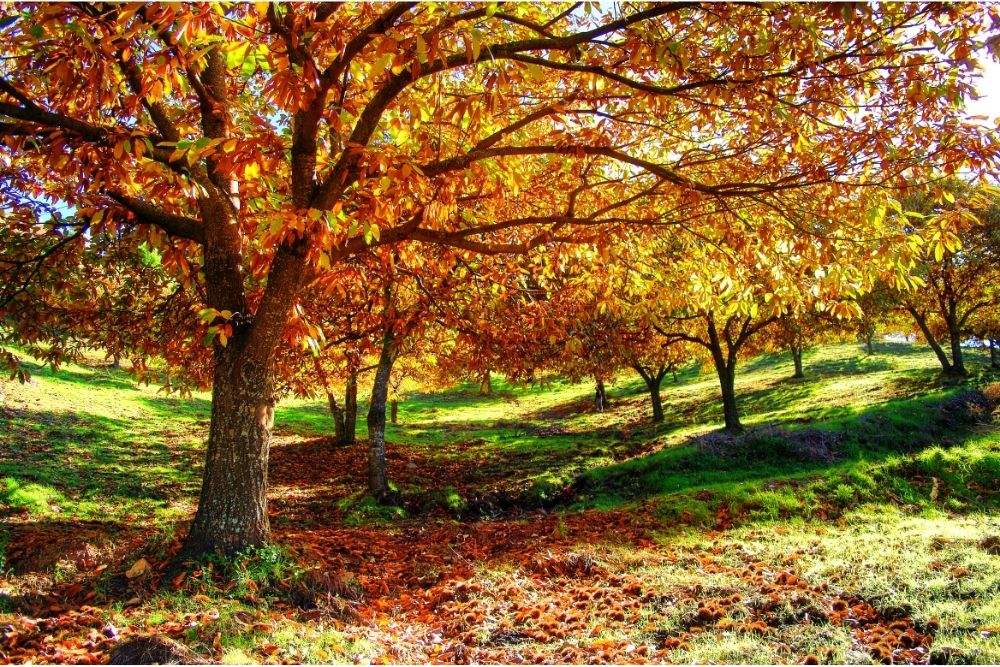
The chestnut trees are super beneficial plants. In addition to being delicious, they are also nutritious and contain high antioxidants. Also, the fruit of the chestnut tree has a sweet taste and is edible.
Chestnut trees are grown commercially throughout the world, which means you can nurture them in different climates! The two primary varieties of chestnut trees are called American and Chinese. These trees produce large amounts of nuts.
The nuts are usually harvested in late fall or early winter. After harvesting, the nuts are stored until springtime and sold at markets. There are several methods that you can use to dry chestnuts. You can either sun-dry them or air-dry them. Sun-drying is the most common method.
Can Be Added to Other Food Products
The leaves of the chestnut tree can be dried and ground into powder. This powder is then used in many different ways, and chestnut flour is often used in baking.
It can be added to food products such as loaves of bread, cakes, cookies, and pastries. Adds a nice flavor to baked goods. It is also used in other desserts.
Chestnut flour can even be used to make pasta! When making pasta with chestnut flour, it should not be cooked for too long because it will turn brown. If you want to make your own pasta with chestnut flour instead of buying it, you need to add oil to the dough before rolling it.
For Medicinal Purposes
These trees are also used for medicinal purposes. For example, Chestnut powder can be mixed with milk to make a good drink for your stomach.
Chestnut tree leaves have been used for centuries by herbalists to treat various ailments. These uses include treating diarrhea, constipation, coughs, colds, flu, fever, hypertension, indigestion, and more.
In addition, chestnut tea is made from the leaves of the chestnut plant. It is believed that this tea helps lower blood pressure.
1. Horse Chestnut Tree
Horse chestnut trees grow well in USDA hardiness zones 3 through 9. They require full sunlight and moderate water during their growing season. They do best if they get regular fertilization.

If you live in an area where it gets cold in the winter, you might want to consider planting a horse chestnut tree outside your home.
2. Common Chestnut Tree
Common chestnut trees are easy to grow and thrive in USDA hardiness zone 6 through 10. They prefer full sun but will tolerate partial shade. Needs adequate moisture during the summer months. They like fertile soil and should be planted near a source of water.

Common chestnut trees grow anywhere between 10-20 feet tall. They are moderately fast-growing and can reach maturity within four years. A benefit to nurturing this species in your own garden is that they produce edible fruits that look like miniature apples!
3. English Chestnut Tree
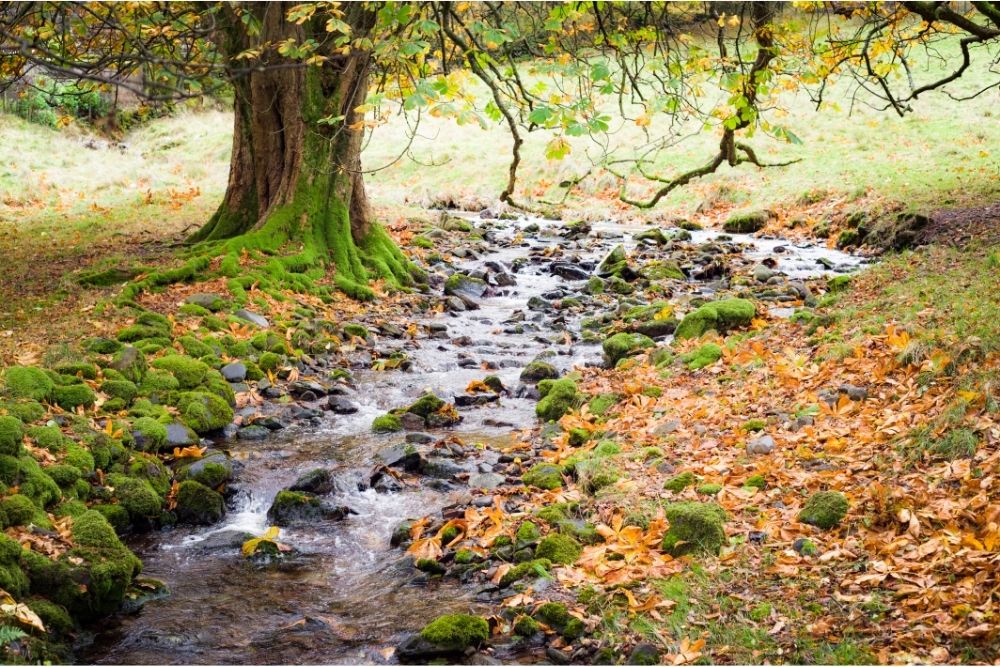
English chestnut trees are trendy because they are fast-growing and easy to care for. They are very tolerant of both heat and cold temperatures.
Moreover, they are not as tall as the common chestnut tree, but they still reach 30 feet. They are great for urban areas because they don’t require much space. In addition, they are drought-tolerant once established.
The English chestnut tree is native to Britain. It doesn’t mind being in wet conditions, which is perfect if you live where it rains often. If you want to recreate a classic English country garden, we recommend planting this tree.
The species produces conkers, traditionally used in children’s playground games. A string is attached to the conkers, and two people stand opposite one another.
The conkers are then swung towards each other, and the aim is for one person to break the others’. This means that it’s a simple game that anyone can play on a budget.
4. Japanese Chestnut Tree

Japanese chestnut trees grow up to 40 feet tall. They are very drought resistant and can withstand freezing temperatures, which means they’re super easy to nurture. Japanese chestnut trees grow well indoors and outdoors. They like full sun and moist soil.
They are slow-growing, so you may need to wait three years before seeing any fruit production. However, these Asian species produce edible fruits similar to peaches.
RELATED: 9 Different Types Of Japanese Trees
5. Italian Chestnut Tree
Italian chestnut trees are one of the tallest trees on earth. They can grow up to 100 feet tall and wide. Are incredibly adaptable and can survive in a variety of climates. They require full sun and lots of water during the growing season.
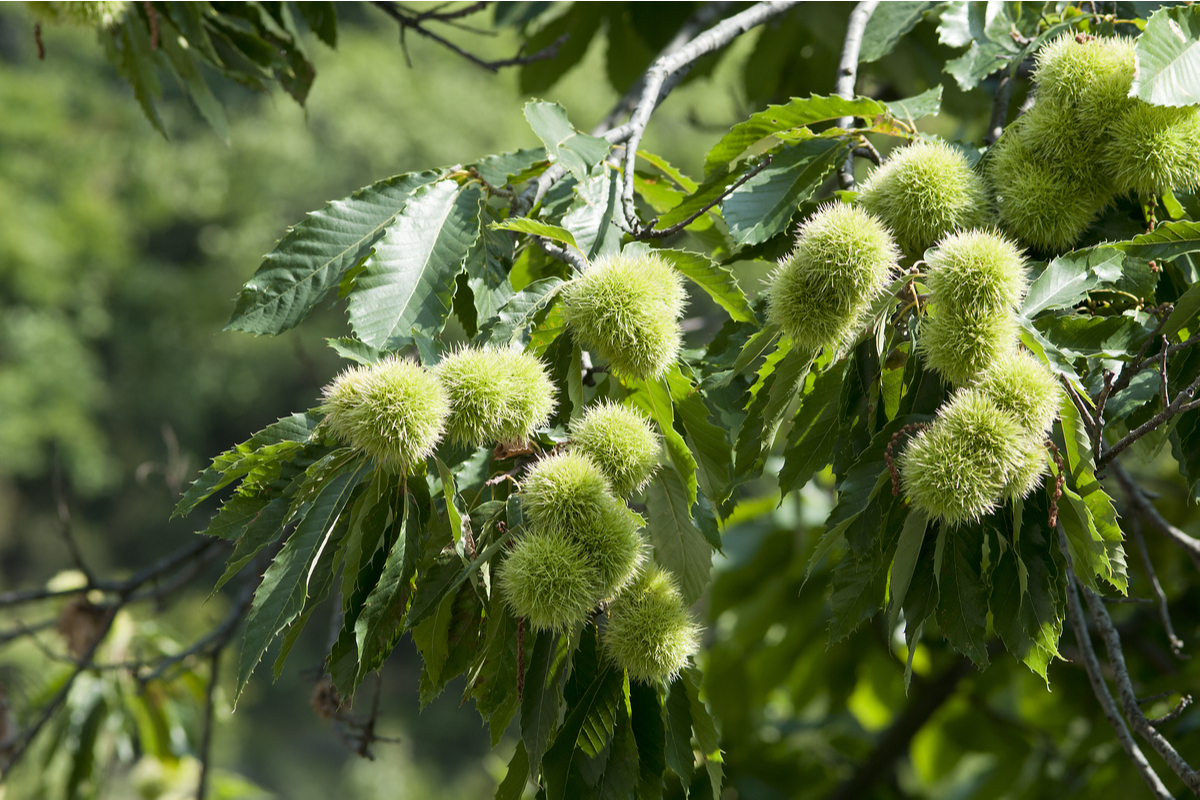
The Italian chestnut tree produces beautiful flowers that bloom in late spring. The flowers are white and fragrant. The fruits are round and greenish-yellow. They have thick skin, which makes them harder to crack open. So, you’ll need a hardy nutcracker or sharp knife to get to the fruit.
6. Chinese Chestnut Tree
Chinese chestnut trees produce delicious nuts and are native to China and Japan. They are usually grown commercially in Asia. They have large crops of tasty nuts each year. In addition, they are easy to grow.
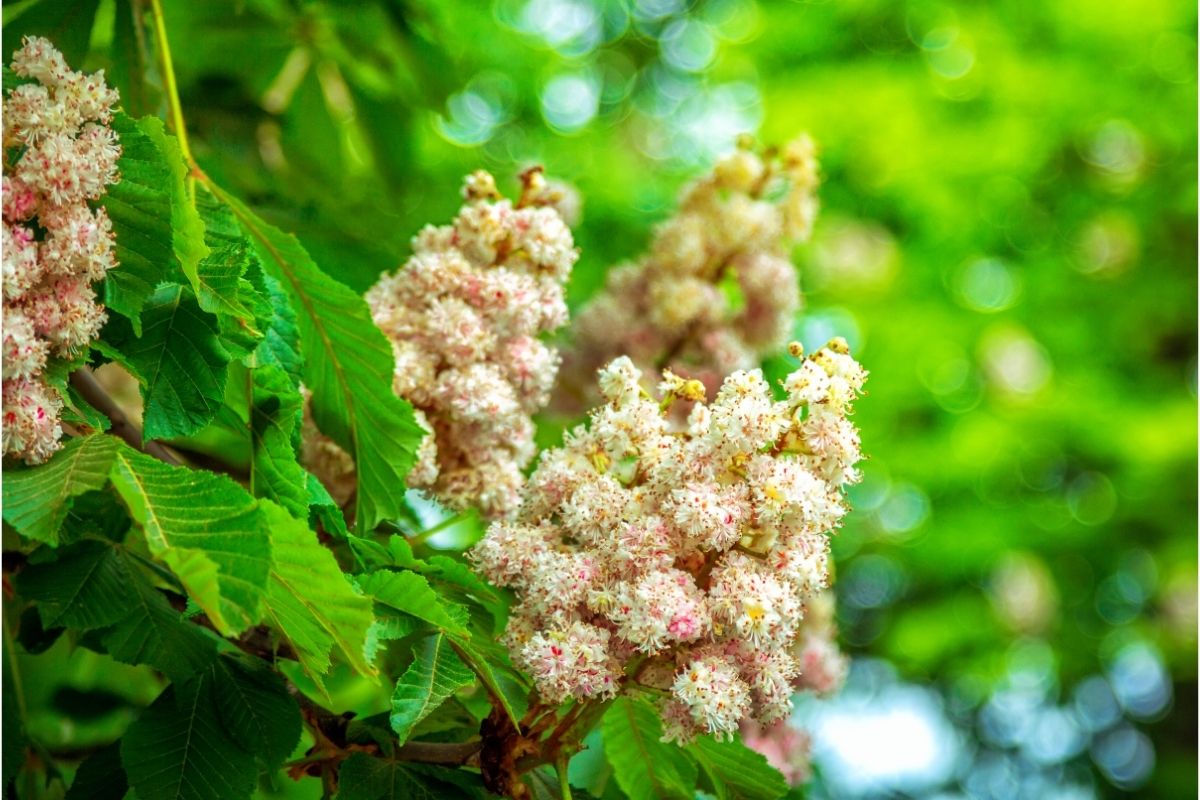
However, there are some things you need to know about growing Chinese chestnuts. This species likes lots of sunshine, prefers moist soil, and appreciates being watered regularly to thrive. This species doesn’t tolerate frost; please make sure you only plant it in a pretty warm climate.
Also, the Chinese chestnut tree is susceptible to pests and sensitive to disease. Finally, it’s worth noting that this species dies after flowering.
7. American Chestnut Tree
The American chestnut tree was once found throughout North America. Unfortunately, the invasive fungal disease called chestnut blight wiped out most of them. Now there are only about 200 American chestnuts left. They are protected by law and cannot be removed or destroyed.
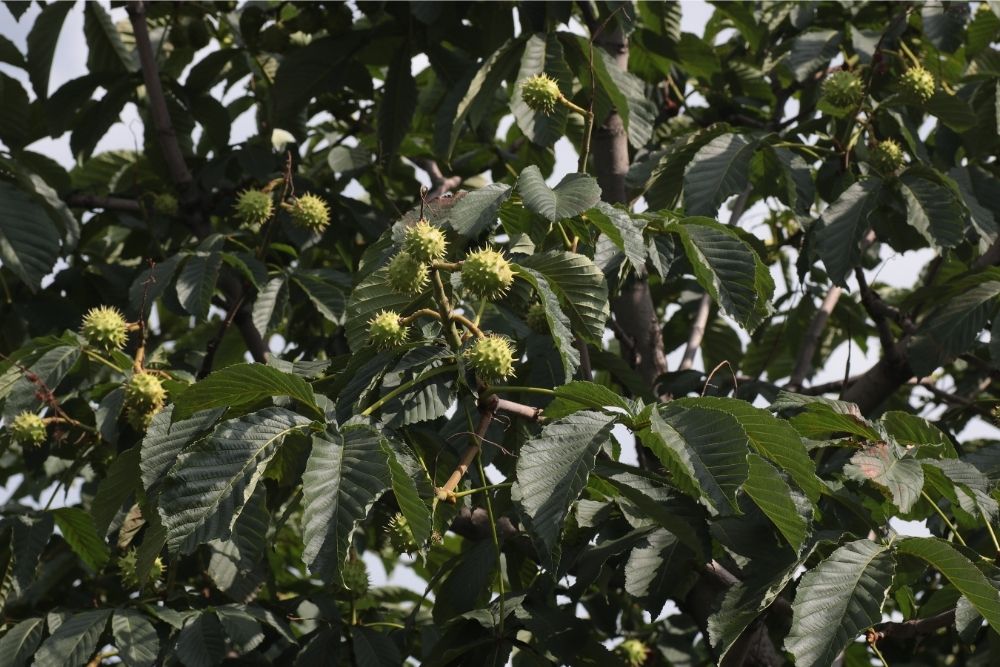
8. European Chestnut Tree
European chestnut trees are similar to American chestnut trees. However, they are smaller than the American version. They are also slower growers. In addition, this species does not tolerate frost, and the American chestnut tree does.

European chestnut trees grow best in USDA hardiness zone 5 through 8. The trees prefer full sunlight and moist soil. They do better if they receive regular watering during the growing season.
They can grow reasonably tall at their peak, which makes them perfect for adding shade to your landscape. Once they’re well established, this species is pretty resilient, so you can leave them primarily to their own devices.
RELATED: Ripe And Radiant: 24 Different Types Of European Trees
9. Sweet Chestnut Tree
Sweet chestnut trees are native to Europe and Asia. They are often called “tree apples” because they look like tiny apples when they are ripe.
They are considered a delicacy in many countries. In addition, the fruit of the sweet chestnut tree is quite tasty. Therefore, this is a popular plant, especially in Germany and Austria.
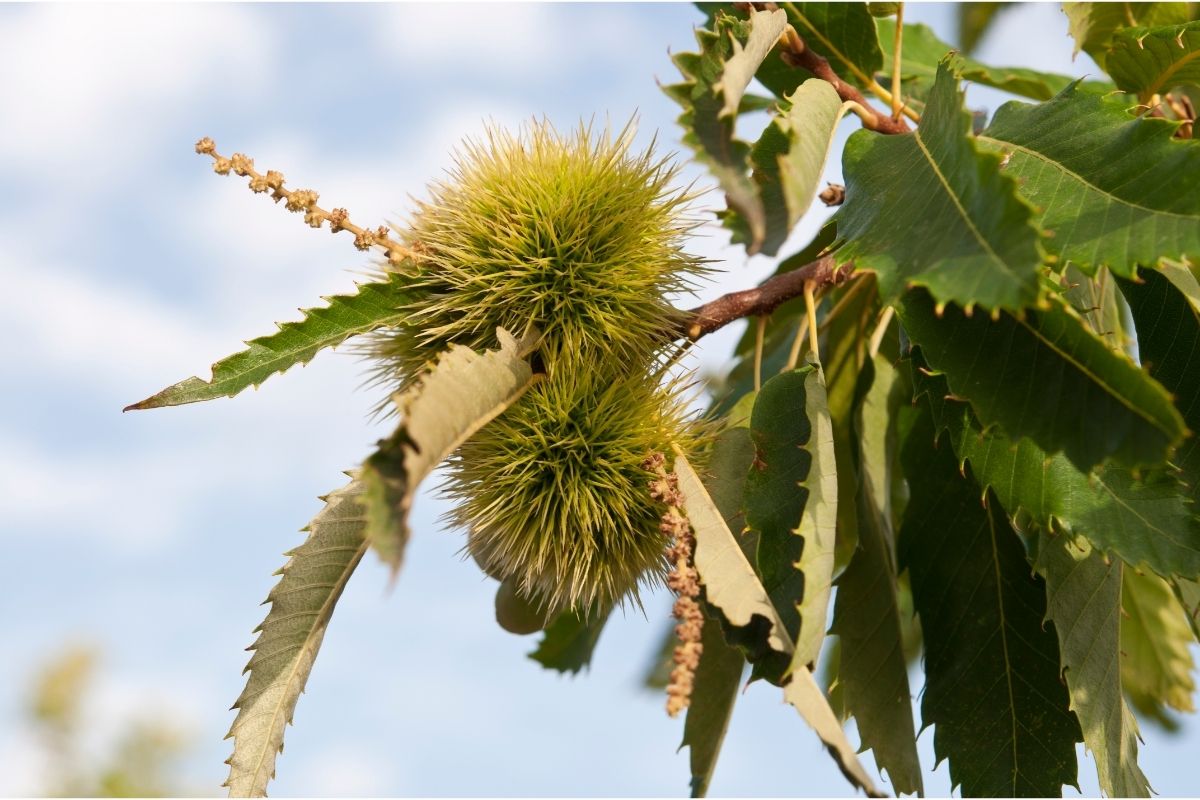
There are two primary varieties of sweet chestnut trees: European and Asian. European chestnut trees are much smaller than their Asian counterparts. Their fruits are about the size of an egg.
The fruits of the Asian variety are more significant than those of the European type. They contain seeds inside, which makes them easier to eat. Both kinds of sweet chestnut trees are straightforward to care for.
They only require full sunlight and moderate watering during their growing season. Once the fruits mature, you should harvest them regularly to avoid losing any seeds.
10. Large-Leafed Chestnut Tree
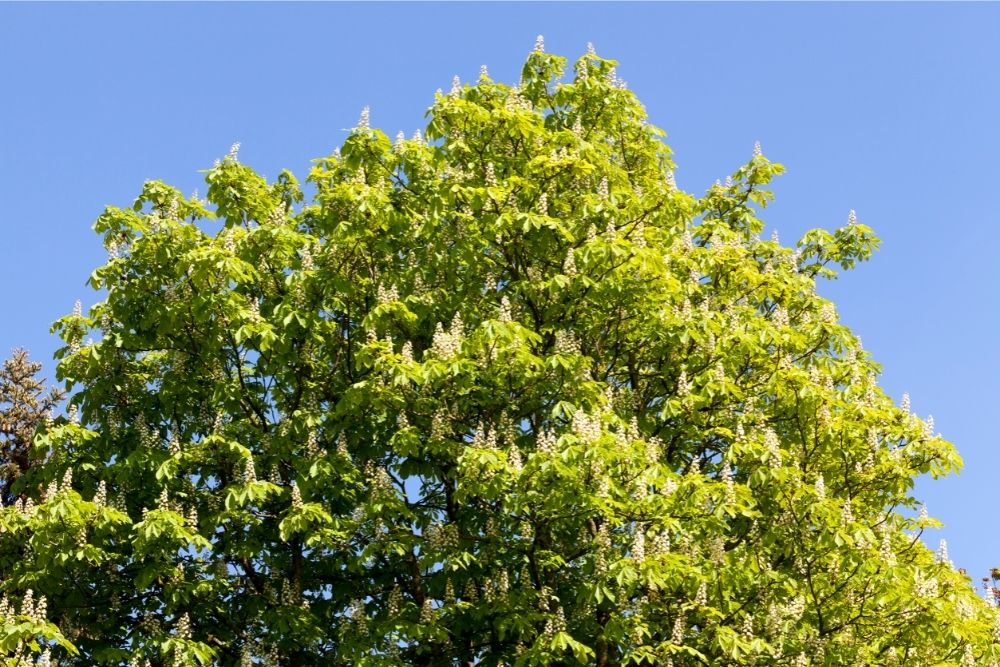
Large-leafed chestnut trees are easy-to-grow and thrive in USDA hardy zones 5 through 8. They prefer full sun and average watering during the growing season. They like fertile soil. If you want to stop the large-leafed chestnut tree from getting a disease, it helps to give it fungicide at least yearly.
The large-leafed chestnut tree has snowy white flowers. In addition, this species of the chestnut tree is known for its reasonably sized fruit.
11. Small-Leafed Chestnut
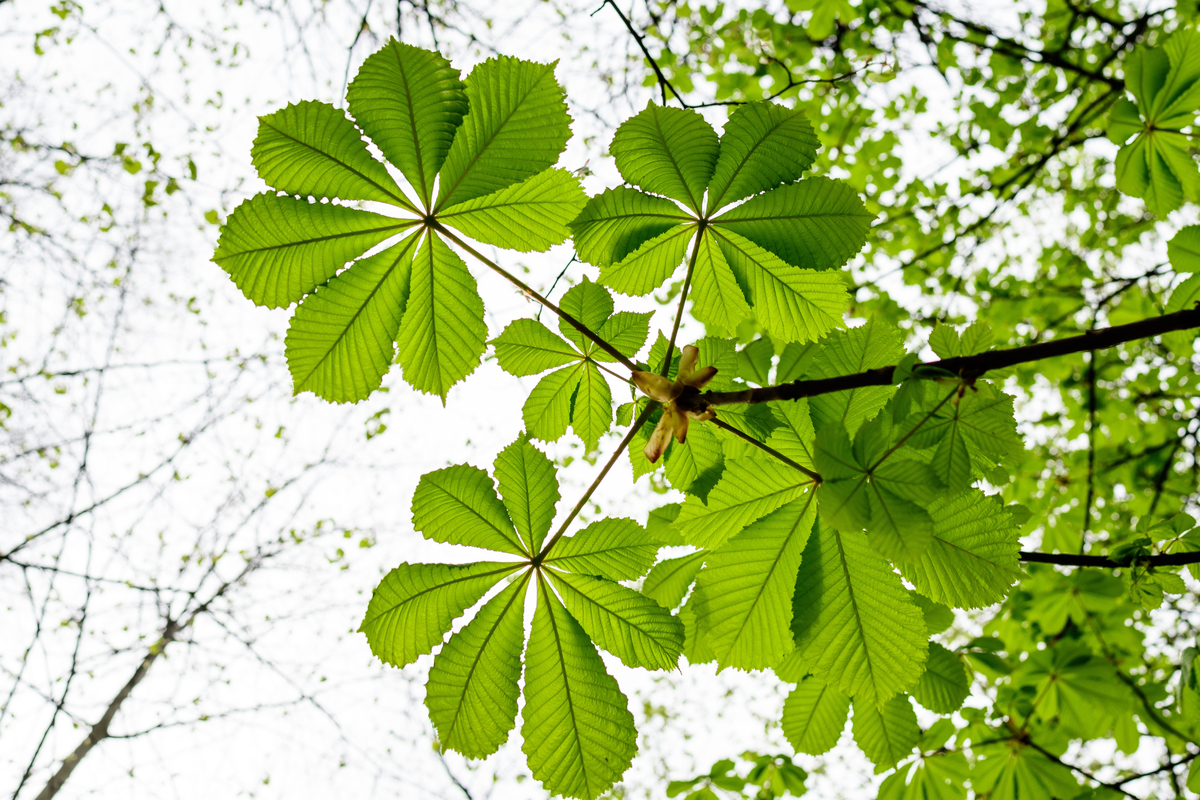
Small-leafed chestnut is a fast-growing tree that thrives in USDA hardiness zones 7 through 11. It requires full sun, average watering, and likes fertile soil. To protect against disease, you should apply a fungicide at least once a year.
The small-leafed chestnut has beautiful white flowers that bloom in the spring. In addition, it makes delicious nuts that are rich in vitamin C.
Final Thoughts
Chestnuts are beautiful trees, which are often renowned for offering shade and producing distinctive fruits.
Moreover, as we’ve shown, many fruits are edible, which means you can put them in many different dishes. So if you’re a keen gardener, baker, and chef, you can nurture this plant and reap the benefits.
Conkers are often grown on chestnut trees, seen in many different British counties. However, this doesn’t mean you have to live in England to grow these plants. Chestnut trees can be grown in different climates, including Italy, Japan, and China.
This versatility makes it incredibly popular with many gardeners. In addition, the plants can grow pretty tall, which means that you can quickly fill an empty space, perfect for creating a private environment.
To get more information about plants, we have content aplenty that can suit you. Our listicles are on a wide range of topics related to these natural species, ensuring you can quickly learn from them. Explore for yourself!







